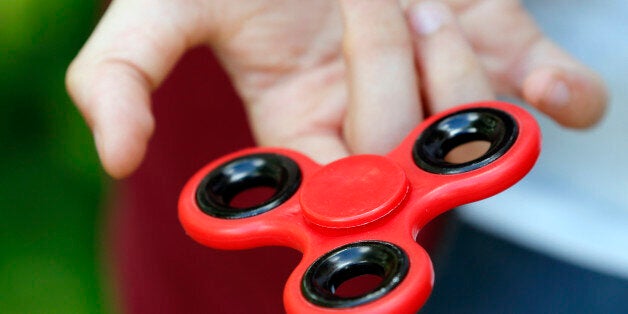
It is debatable whether teachers or parents would thank her for it, but Catherine Hettinger was the inventor of the fidget spinner. In 1993, Hettinger was suffering from myasthenia gravis, an autoimmune disorder that causes muscle weakness. She was also caring for her daughter, and invented the toy for amusement when it was proving too difficult to pick up larger toys.
Having already sold fidget spinners in craft fayres, she secured a patent from the US Patent and Trademark Office (USPTO) in 1997. This expired in 2005 and Hettinger made the fateful decision not to renew the patent. At the time, the renewal would have cost $400. It's now estimated that over 200 million spinners have already shipped to retailers and, with spinners wholesaling for $0.50 to $1.50 from Chinese factories, and with no patents or licensing fees to be paid, the margins are astronomical.
Nobody knows for certain whether a product, idea or innovation is going to be a worldwide success, and even less so over what timescale, but making the right decisions about which ideas to protect, and for how long, is one of the more critical decisions a business can make. Protecting ideas is a critical yet potentially expensive decision for individuals and businesses alike, but nobody wants to be the next Catherine Hettinger.
When should innovative ideas be legally protected?
Copyrighting, trademarking or patenting provides the right to exclude others from making, selling or using designs or inventions. A patented or trademarked asset is essentially a growth enabler that rewards innovation. Businesses can extend market share with less fear of competition and create valuable royalty payments, but companies need to judge carefully which ideas are worth protecting. A particularly innovative or original idea can be worth millions, but the patent could cost thousands in application fees before any revenue is generated.
Is it possible to build a successful business without IP?
Entrepreneurs need to balance the slow process of IP protection against the need to gain market share quickly. On release, the mobile app game Flappy Bird was copied almost immediately, with more than 60 clones hitting app stores every day at the peak of its popularity in 2014. Despite this, the original app was making $50,000 per day in sales and advertising revenue, although its product lifespan was short.
What trends are happening in innovation?
Today, innovation comes from anywhere. Traditionally, it took place in large organisations within research and development departments that could afford the investment. Now, resources such as crowd funding sites enable people to come up with an idea and test its viability quickly. We have become a more innovative economy, more willing to take risks and back ideas. Likewise, the improved connections between universities and industries are also bringing a new level of innovation to market quickly. The founders of mobile app Snapchat came up with the concept in class at Stanford University five years ago, and are now worth $4 billion each.
Today's pace of innovation demands greater protection of new ideas and inventions. Yet intellectual property (IP) management is not always a high business priority for companies. Organisations that fail to recognise IP as a strategic asset put their competitive advantage and profit margins at risk. Prioritising and protecting IP assets helps organisations stay in front of competitors and drive greater growth.